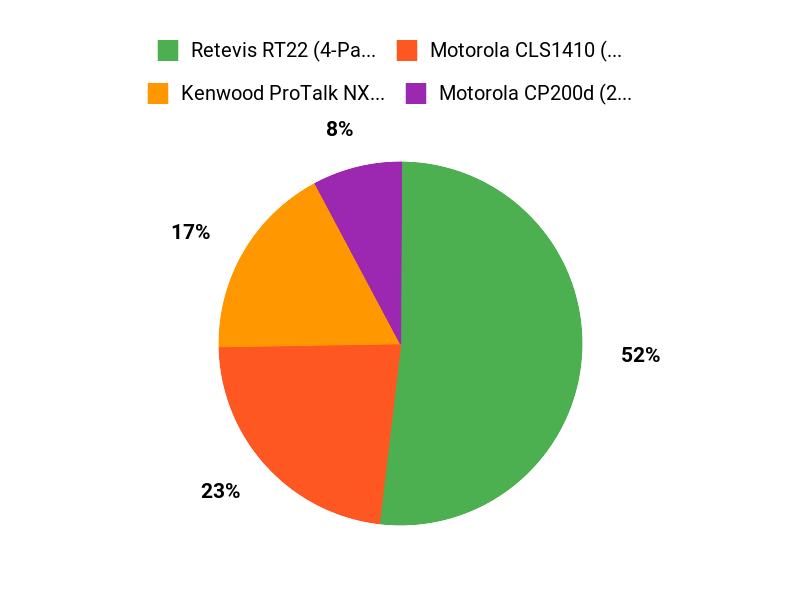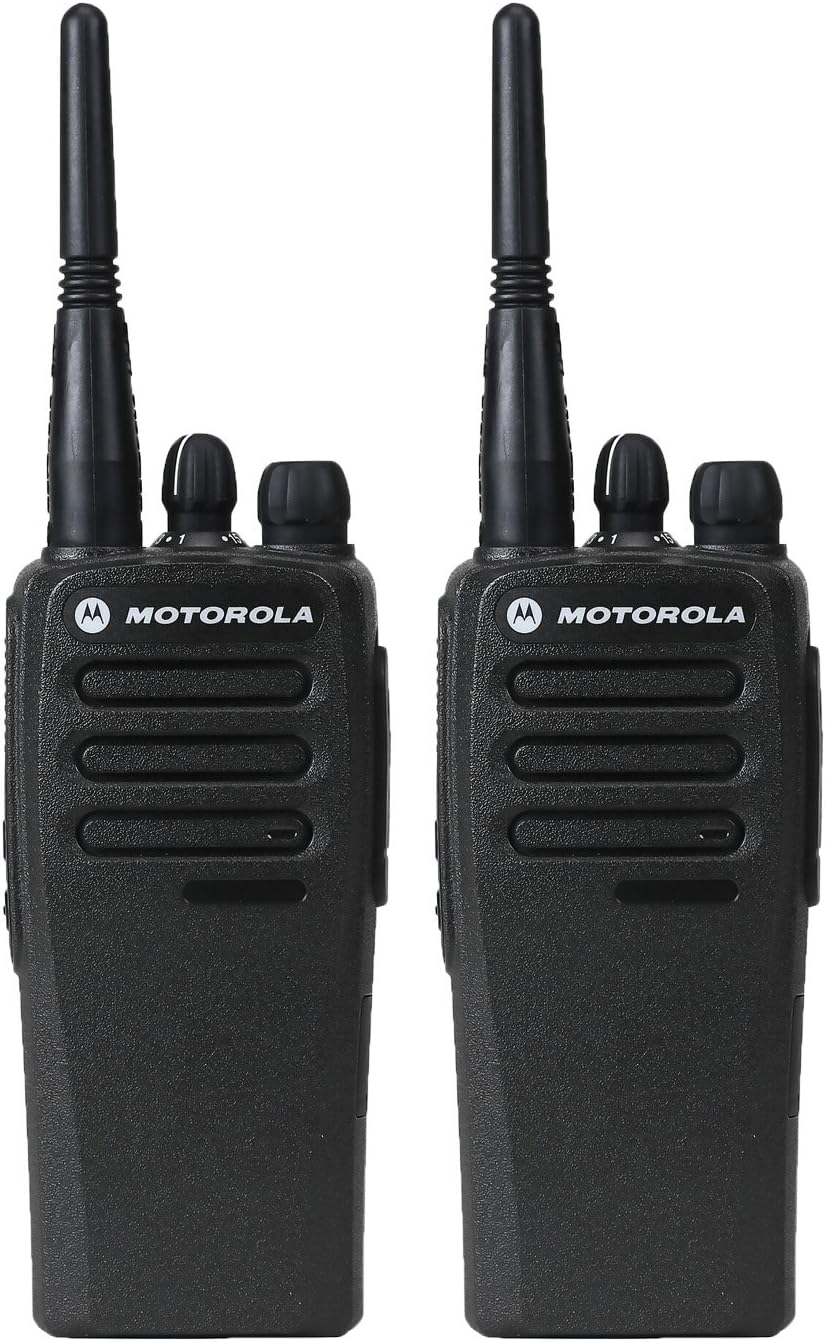
Published: August 26, 2025
You rely on clear on-site communication to keep operations running smoothly. Whether you manage a retail floor, a warehouse, a construction crew, or an events team, Business Walkie Talkies give you instant coordination, faster response times, and fewer misunderstandings.
This guide helps you compare proven models so you can pick radios that match your coverage, durability, and budget needs while avoiding common pitfalls.
Category |
Product |
Score |
|---|---|---|
🏆 Best Overall |
92/100 |
|
💰 Best Value |
80/100 |
|
⚡ Best Performance |
88/100 |
|
🎯 Best for Beginners |
75/100 |
You should pick Business Walkie Talkies that meet the real demands of your site and team. Key factors we used: - Range & Signal: We prioritized radios with reliable UHF/FRS performance and real-world talking ranges for indoor and outdoor conditions. Range estimates vary by environment, so you should treat manufacturer range figures as best-case.
- Audio Quality & Volume: Clear audio and loud speakers matter when you work in noisy settings. We favored models with noise reduction, strong speaker output, and consistent clarity.
- Durability & Weather Resistance: You need radios that tolerate drops, dust, and moisture. We looked for water resistance ratings, rugged construction, and mil-spec features where applicable. - Battery Life & Charging: Long runtimes and flexible charging (swap batteries or USB-C) reduce downtime.
You should consider whether rechargeable lithium packs or replaceable AA/AAA batteries are better for your operation. - Features & Ease of Use: Simple push-to-talk ergonomics, programmable channels, emergency features, and compatibility with existing systems were weighed so you can deploy radios quickly. - Compliance & Licensing: For business use you may need UHF/GMRS/FRS licensing depending on region and frequency.
We noted license-free options for teams that want plug-and-play operation. - Price & Total Cost of Ownership: Upfront cost, availability of spare batteries, and accessory pricing all affect long-term value. We balanced cost against performance and durability so you get radios suited to your budget and needs.
If you need reliable Business Walkie Talkies for a small team, these Motorola CLS1410 two-packs are an easy, no-nonsense option. They're lightweight so you (or your staff) can carry them all shift long, and they come ready to use with a charger, batteries, and belt holsters.
The UHF tuning and business-exclusive frequencies help keep conversations clearer in busy environments, and features like VOX hands-free transmit and a keypad lock make them practical for hands-on work. Use them day-to-day across retail floors, warehouses, or building maintenance, and bring them along for larger events or busy shifts where quick coordination matters.
If you want simple, durable radios that get the job done without a steep learning curve, these are worth considering.
Rating: 4.3 (total: 52+)
See PricingThese Retevis RT22 units are a practical set of Business Walkie Talkies that feel designed for everyday use. They’re small enough to slip into a pocket or clip to a belt, and the USB‑C charging makes topping them up quick and familiar.
The short, blunt antenna is less likely to snag during busy shifts, and the built-in speaker keeps calls loud and clear for team coordination. Because they’re license-free and compatible with other FRS radios, you can get a few into the hands of staff and have them communicating fast. Use them on retail floors, in hospitality, at warehouse docks, or for managing events and outdoor groups — they also work well for occasional trips like group hikes or campsite setups. If you want straightforward, reliable radios that don’t require a lot of setup and play nicely with other FRS gear, these are a solid, no-fuss option.
Rating: 4.2 (total: 1,128+)
See PricingIf you need Business Walkie Talkies that can handle a rough day and still sound clear, this Kenwood ProTalk is worth a look. You get plenty of range from the 5 W transmitter and a surprisingly loud 1,000 mW speaker, so messages come through even on noisy sites. It’s built tough to military standards and rated for dust and light water exposure, which makes it a reliable pick for construction, security, event crews and outdoor teams.
The voice announcement, channel zones and handy belt clip save you fiddling with controls during a busy shift, and features like battery saver mode and call alerts keep communications running when it matters. If your team wants durable, no-nonsense radios that focus on clear voice and dependable on-site use, this one fits that role nicely.
Rating: 3.8 (total: 42+)
See PricingIf you need Business Walkie Talkies that are easy to live with day after day, this 2-pack of Motorola CP200d makes a lot of sense. You get noticeably longer runtime (around 18 hours in real use), clearer audio and better coverage than many older analog models, and the radios can run digital and analog at the same time so you can migrate your system without swapping everything out overnight.
The interrupt feature is handy when someone needs to cut in for a priority message, and the unit uses the same batteries and chargers as earlier CP200 models, which saves hassle. On a normal shift these feel straightforward — belt clip, simple knobs and a solid build that stands up to warehouses, facilities work and retail backrooms.
For special occasions like events or busy service nights, the extended battery life and IP54 resistance mean fewer mid-shift surprises and less time swapping gear. If you want reliable, no-fuss Business Walkie Talkies that play nicely with existing equipment and focus on clear, consistent comms, the CP200d is a practical choice.
Rating: 4.7 (total: 5+)
See PricingYou should start by matching device capabilities to your environment and workflows: choose UHF models when you need better indoor penetration and select higher-watt radios or systems with repeaters for wide outdoor coverage. Consider channel capacity and whether you need analog, digital, or dual-mode radios so you can migrate without replacing everything at once.
Prioritize battery runtime and available spare or swappable batteries, ruggedness or IP/MIL ratings for harsh sites, and vendor support for programming and repairs. Check interoperability so your radios work with existing systems and accessories, and ask for an on-site demo or coverage test before you buy to confirm real-world performance.
You should treat published range figures as best-case, line-of-sight numbers; in real environments walls, metal structures, terrain and RF noise typically reduce range to a fraction of the advertised value. For indoor operations expect reliable coverage measured in hundreds of meters to a few kilometers depending on building construction and frequency band, while outdoor coverage can be extended with repeaters, higher transmit power, or UHF/VHF choices suited to your terrain.
Test radios in the exact locations where you work, use site surveys if coverage is critical, and plan for redundancy such as extra units or a hybrid system if continuous communication is essential. Remember that selecting the right antenna, mounting height and channel plan often improves practical coverage more than chasing maximum wattage.
You need to check local regulations because some systems are license-free (for example many FRS radios) while business UHF/VHF bands and GMRS in some countries require licensing or coordination. You can improve reliability and privacy by assigning dedicated channels, using CTCSS/DCS tones for channel filtering, and deploying digital radios or approved encryption where regulations permit. Maintain reliable service by keeping batteries charged and rotated, stocking spares, scheduling routine programming backups and firmware updates, and training staff on radio etiquette, emergency channels, and correct microphone technique.
If you operate critical communications, consider a service agreement with programming and repair support and perform periodic field tests to verify coverage and channel clearance.
When choosing between the Motorola CLS1410 (2-Pack), Retevis RT22 (4-Pack), and Kenwood ProTalk NX-P1300AU (5W), you typically prioritize pack size and cost per unit to fit your team size, transmit power and range for coverage needs, battery life and audio clarity, plus ruggedness and advanced features for demanding environments. You’ll lean toward the Motorola for compact, budget-friendly simplicity for small staffs, the Retevis when you need more units and easy setup for larger crews, and the Kenwood when 5W performance, reliability, and durability are essential for longer-range or tougher conditions.

When you choose Business Walkie Talkies for your team, focus on reliable coverage, clear audio, and durable hardware. The right radios reduce response times, simplify coordination, and lower operating friction across shifts and sites.
Use the selection criteria above to match features to your workflow, and prioritize devices that balance performance and total cost so you can keep your workforce connected and productive.
| Product | Image | Rating | Battery Life | Talking Range | Number of Channels |
|---|---|---|---|---|---|
| Motorola Professional CLS1410 5-Mile 4-Channel UHF Two-Way Radio |  |
4.3/5 (52 reviews) | N/A - 2 AA batteries required (included) | Up to 36 miles | 4 |
| Retevis RT22 Two Way Radio Long Range Rechargeable |  |
N/A | N/A | Up to 2 miles | 16 |
| Kenwood ProTalk NX-P1300AU UHF Two-Way Portable Radio |  |
3.8/5 (42 reviews) | N/A - 1 Lithium Ion battery required | Up to 6 miles | 64 |
| 2 Pack of Motorola CP200d UHF Two Way Radios |  |
4.7/5 (5 reviews) | Up to 18.5 hours | N/A | 16 |